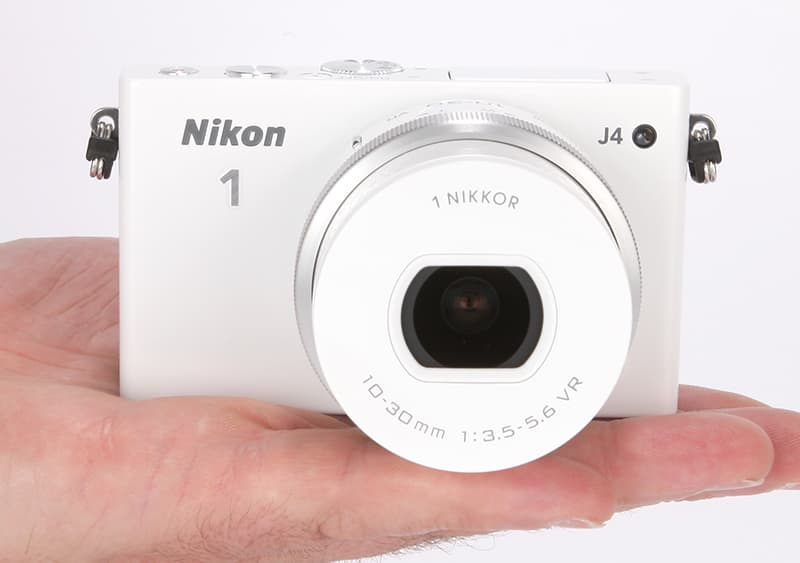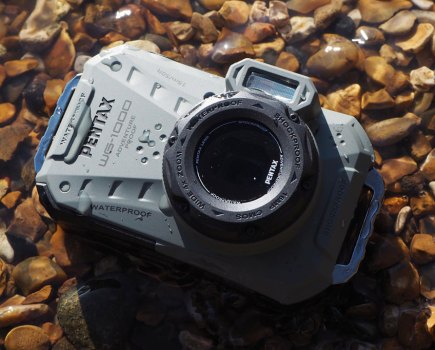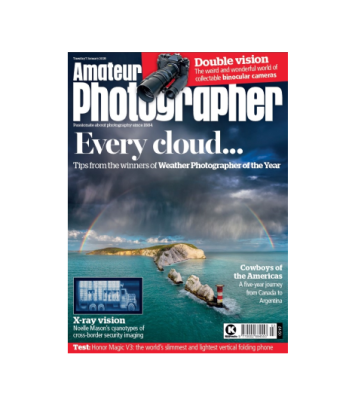Nikon 1 J4 pros
- 20 frames-per-second continuous shooting with continuous AF
- Modern and stylish design with metal chassis
- Responsive and bright touchscreen
Nikon 1 J4 cons
- Only indication of frames captured is an unpleasant electronic shutter noise
- Kit lens zoom audible during video
- Kit lens is a touch soft particularly when zoomed
Nikon 1 J4 review – introduction
Nikon’s latest compact system camera looks impressive on paper and makes an equally stunning impression at first sight.
Following on from the popular J3, Nikon has given the new J4 a more refined and classier finish, as well as packing in feature improvements. These improvements include better battery life, CIPA rated to 300 shots from a single charge, touchscreen control, more megapixels, up from 14.2-million-pixels to 18.4MP, and an ISO sensitivity range of 160-12800, twice that of its predecessor. Nikon has also opted for a microSD slot rather than SD, perhaps to make room for some of the above.

The J4 is available as part of a kit including one of the latest Nikkor 1 mount lenses to be released, the VR 10-30mm f/3.5-5.6 PD-Zoom, which costs approximately half the price of the J4 on its own, so it’s good value in that respect. Measuring only 28mm in length, the compact kit lens offers a 27-81mm equivalent range, which isn’t quite wide enough in my opinion, but for an everyday walkabout lens it’s a decent range. Certainly good enough to get you started.
Nikon 1 J4 review – Features
Featuring an intelligent hybrid AF system made up of 171 contrast-detection areas, 105 of which support phase detection, and combined with Nikon’s EXPEED 4A image processor, the J4 is capable of continuous autofocus during 20 fps burst mode which is undoubtedly its most impressive feature. However, it can also shoot up to 60 frames per second with fixed AF.

Image: Being able to shoot 20-frames-per-second it is easy to stop time with the J4, making it easy to take great shots captured in the moment
Given its compact size and blistering burst mode speed there aren’t many other system cameras that can be directly compared to the J4. Instead you’re looking across Nikon’s own Nikon 1 range and then over to the micro four thirds camera class and above to cameras such as the Olympus Pen Mini E-PM2, Samsung’s NX mini and NX3000, the Panasonic GM1 or Sony’s Alpha A5000.
All are great alternatives in terms of lens range, sensor size and features, but none can keep up with 20 frames per second continuous shooting, which gives the Nikon 1 J4 the edge if speed is at the top of your priority list.
Build and handling
Sporting a slightly more refined body with a metal exterior and available in a range of colours, the J4 definitely attracts admiring glances, which is a good or a bad thing depending on where you are.

It’s clear that it has been designed to appeal specifically to style-conscious image takers. At 99.5mm x 60mm x 28.5mm and weighing 192g it is fractionally smaller than its predecessor and only 47g heavier than Samsung’s current flagship smartphone, making it a perfectly compact size for coat pockets and carrying around your neck all day. The J4 may be petite, but it feels very well crafted and sturdy.
Some may find the lack of a handgrip an issue, as there is only a small lip for a thumb to rest on and absolutely nothing but the camera’s smooth, flat surface on the front. I did find the camera comfortable to hold however, so this didn’t bother me.
In keeping with its minimalistic design, there isn’t much in the way of physical controls on the J4, just a mode dial, menu, playback, a multi selection wheel, delete and a dedicated movie record button. However, there is also a bright 3-inch 1.037-million-dot touchscreen, with swipe and pinch-to-zoom functionality.
I found the screen relatively easy to use in bright sunlight and highly responsive, featuring touch AF area selection and shooting.

Performance
Promising so much on the spec sheet I was genuinely looking forward to using the J4, but within minutes of turning it on, I was finding it a particularly frustrating camera to use.
Auto focusing is very fast indeed and I experienced very few out of focus images. I was also very pleased with the metering, although I did notice a slight tendency for the camera to underexpose images.

Image: I noticed a slight tendency for the camera to under expose and produce cool tones under cloudy skies
The kit lens doesn’t help matters either as I found it to be quite soft, particularly at its telephoto extremes. But this is an interchangeable lens camera so that issue is easily solved with better quality glass. The biggest challenge with the J4 camera is finding the right settings for the job at hand.
The camera’s mode dial has five settings: Movie, Auto, Best Moment Capture, Creative, and Movie Snapshot. All other adjustable exposure settings within those modes are then assigned to the F (feature) button at the top of the multi selection wheel or one of its other three buttons, which are set to exposure compensation, flash and release.
Manual control hides inside the Creative setting on the mode dial, then all manual modes and their respective settings can be adjusted using the touchscreen or the rear wheel.
The result of this approach means that I regularly had to scramble between menus and settings trying to find the right ones for each scene, not least because the mode dial can be turned accidentally with little effort.

Image: Although there are blown highlights as expected, the camera’s metering system still delivered a pleasing exposure of the balloons
I found the operational performance of the J4 a hindrance and unnecessarily awkward unless left in Auto mode, where Nikon has been helpful to beginners and replaced photographic terminology such as exposure compensation and shutter speed with phrases like “brightness” and “motion control”.
Another issue I experienced when using the J4 was that unless I left the toy machine gun-like shutter release sound turned on, there was no discernable way of knowing whether or not I was taking any pictures at all during continuous shooting. Holding down the J4’s shallow shutter button, the screen gives no indication that you’re capturing images, there’s no shot counter and as it has an electronic shutter, there’s no blackout as the shutter is released.
Because of this quirk it’s hard to be confident that you’ve got the shot you wanted without constantly checking. It’s a small issue, but it makes a difference and results in wasted card space.
Image Quality
Nikon 1 J4 review – Resolution
In our tests, the Nikon 1 J4 managed to resolve a maximum of 26 lp/ph at ISO 160, dropping to 20 lp/ph at ISO 12800, this level of resolution performance is about what I would expect from a camera of this type.

Nikon 1 J4 review – Dynamic range
I was surprised to see how limited the dynamic range performance of the Nikon J4 is, only managing 10.86EV at its base ISO sensitivity and beyond that, it’s outperformed by Samsung’s cheaper and smaller NX mini. Very little detail is retained in shadow or highlight areas, particularly in medium to high contrast scenes.

Nikon 1 J4 review – Noise
Up until ISO 400 noise is handled perfectly fine, but beyond ISO sensitivity 800, images begin to lack detail due to aggressive noise handling. Even without the damaged caused by JPEG compression and in-camera noise, I wouldn’t recommend trying to shoot anything much beyond ISO 800.
Nikon has done well to deliver double the maximum ISO sensitivity range of the older J3, but I would describe ISO 3200 – 12800 as unusable.

Noise, resolution and dynamic range charts will follow shortly…
Resolution, dymanic range and noise
Nikon 1 J4 review – Resolution

In our tests, the Nikon 1 J4 managed to resolve a maximum of 26 lp/ph at ISO 160, dropping to 20 lp/ph at ISO 12800, this level of resolution performance is about what I would expect from a camera of this type.
Nikon 1 J4 review – Dynamic range

I was surprised to see how limited the dynamic range performance of the Nikon J4 is, only managing 10.86EV at its base ISO sensitivity and beyond that, it’s outperformed by Samsung’s cheaper and smaller NX mini. Very little detail is retained in shadow or highlight areas, particularly in medium to high contrast scenes.
Nikon 1 J4 review – Noise

Up until ISO 400 noise is handled perfectly fine, but beyond ISO sensitivity 800, images begin to lack detail due to aggressive noise handling.
Even without the damaged caused by JPEG compression and in-camera noise, I wouldn’t recommend trying to shoot anything much beyond ISO 800. Nikon has done well to deliver double the maximum ISO sensitivity range of the older J3, but I would describe ISO 3200 – 12800 as unusable.
Our verdict
Although I have my issues with it, there are things to like about the Nikon 1 J4, particularly if you’re completely new to photography. It’s aesthetically beautiful for one and feels premium.

Then, of course, there is the J4’s impressive continuous autofocus and shooting capability, which is ideal for shooting fast and unpredictable subjects. Once you get used to the J4’s operational quirks and lack of image capturing feedback, you’ll be hard pressed to miss a shot. I’d definitely recommend investing in a better lens though, as the kit option doesn’t do the camera any favours.
The J4 currently stands out from the crowd thanks to its speedy capturing and processing abilities, but it’s not perfect and also not a huge step up from the 15 continuous frames per second offered by its older sister, the Nikon J3. If speed and ultimate style in a compact body are your top three requirements for a new camera, there’s very little to rival the J4.
Nikon 1 J4 – key features
Super fast continuous shooting and autofocus, is backed up by some other great features.

Best Moment Capture
Take 20 high-resolution frames in one second and then select as many as you want to keep in playback, this is perfect for taking pictures of the children and pets
Burst Mode
With continuous AF, the J4 can shoot 20 full resolution images per second and a staggering 60 frames-per-second with fixed AF
Touchscreen
Bright and highly responsive, the J4’s 3-inch 1.037-million-dot touchscreen also features point-to-focus and shoot
1 Nikkor
This compact system camera is compatible with a growing range of 1 Nikkor lenses
Get Creative
Beyond standard PASM modes, other options such as Creative Palette filter effects, HDR mode, Easy Panorama and effects such as Selective Colour can be found inside the camera’s Creative setting
Wi-Fi
Shoot remotely or connect to compatible smart devices via built-in Wi-Fi. It’s also possible to access to Nikon creative photo apps via the internet








